
Three vying for prestigous title. PAGE 7

ANIMAL HEALTH
App trial yields promising results.
TO ALL FARMERS, FOR ALL FARMERS

Farmer confience lifts, but still remains fragile.


Three vying for prestigous title. PAGE 7

App trial yields promising results.

Farmer confience lifts, but still remains fragile.
PIG FARMERS say the idea that not every pork product sold in New Zealand has to be produced to this country’s own welfare standards is unfair.
NZ Pork chief executive Brent Kleiss’s comments come after the release of the “Closing the Welfare Gap” report by Animal Policy International.
The report claims that New Zealand ought to apply its animal welfare standards to imports as well as local agricultural products.
“New Zealand has taken steps to improve the conditions for some farmed animals through prohibitions on practices like battery cages, sow
To celebrate the recently announced partnership between Beef + Lamb New Zealand and the New Zealand Olympic Team, a special culinary event took place in Auckland recently. Five groups of school children were invited to cook alongside Olympians, all under the guidance of renowned chef Peter Gordon. The children had the unique opportunity to cook meals using New Zealand grass-fed beef alongside their Olympic idols. Pictured is the winning team from Wesley Intermediate School with Olympian weightlifter David Liti.
stalls, and the imminent farrowing crate ban, earning a C rating on the 2023 Animal Protection Index,” the report reads.
“However, a substantial portion of animal products sold in New Zealand are imported from countries with lower welfare standards, leaving serious welfare gaps.”
It’s an issue Kleiss says is significant for New Zealand’s pig farmers. He says they are proud of the way they produce
quality pork under high standards of animal welfare, environmental management and employment practices.
“But it is a fact that pig farming is more expensive and less efficient when done this way,” Kleiss adds.
“Consumers are watching every dollar they spend and it can be difficult to convince people, especially in the current economic circumstances, to spend more on products that are produced to these high standards when
they are lined up on the shelf beside a similar cheaper imported product,” he told Rural News
Approximately two thirds of pork consumed in New Zealand, amounting to over 40,000 metric tonnes (MT), was imported in 2023, coming from 22 countries.
Kleiss says that despite this, there is no requirement for the products to meet New Zealand’s pig welfare standards.

“Although the European Union is currently reviewing animal welfare legislation, most EU members and other countries exporting pork to New Zealand have lower standards of pig care and less rigorous enforcement regimes than we do,” Kleiss adds.


For example, in New Zealand, gestation stalls are banned. Yet in Canada and most European countries, sows can be confined in gestation stalls for the first four weeks of pregnancy. In the United States, sows can be confined for their entire pregnancy.
Kleiss says that New Zealand pig farmers do not castrate piglets, but in Europe, the US and Canada, they are routinely castrated.
He adds that in Spain, Poland and the US, this practice is done without pain relief.
“In New Zealand, sows are only housed in farrowing systems when it is time for them to give birth and care for their piglets – with a maximum of five days pre-farrowing and 28 days after. Most EU countries and the US have no limit on how long a sow can be confined in a farrowing system, either before or after giving birth. Canada allows up to six weeks.”
Kleiss says it all comes down to one thing: a need for a level playing field for New Zealand’s pig farmers.
“The new Government should demonstrate its commitment to animal welfare, the environment and local farmers by subjecting imported pork to the same stringent standards that are applied to Kiwi farmers,” he says.
@rural_news


facebook.com/ruralnews



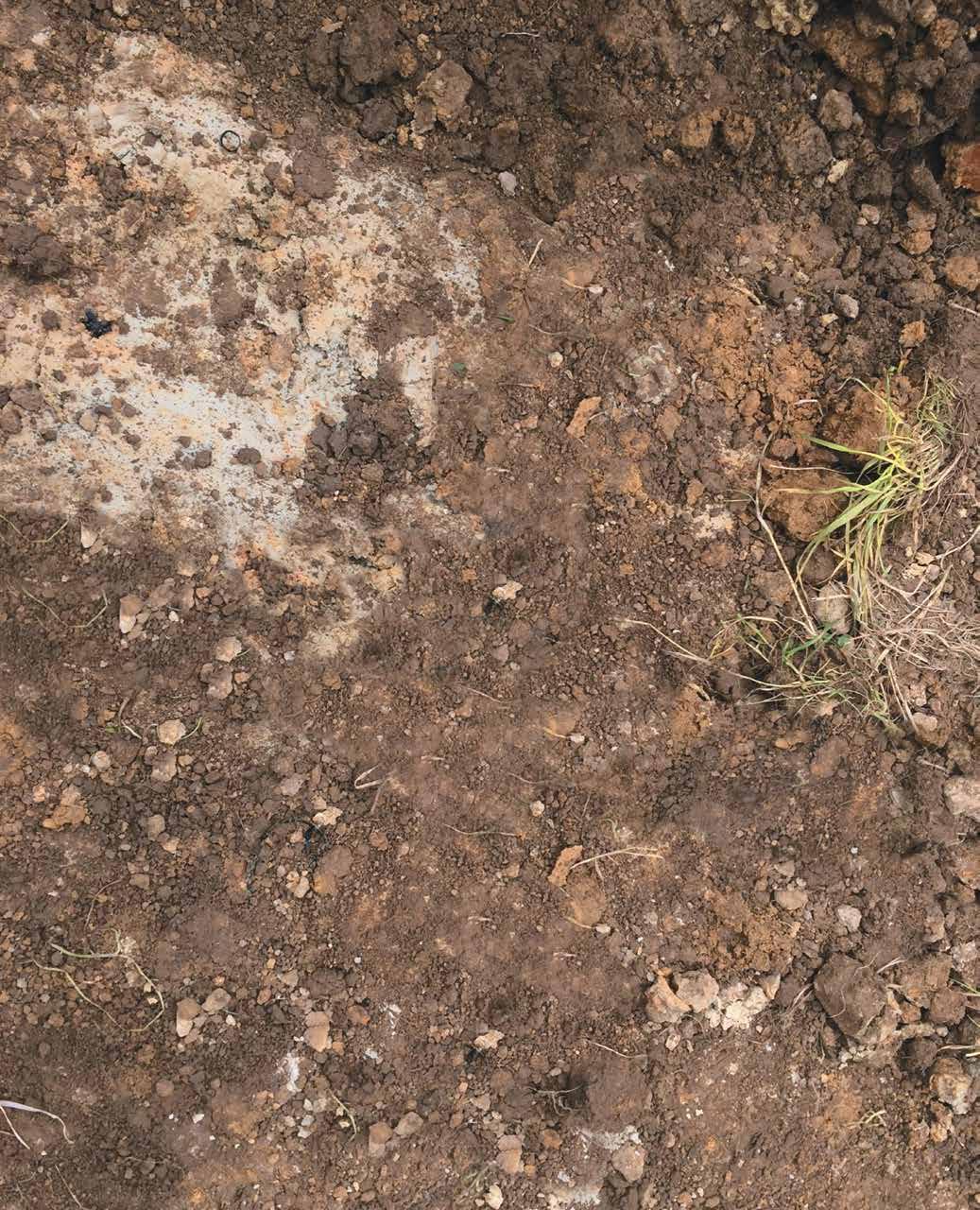


ARE CHINESE buyers returning to the Global Dairy Trade (GDT) auctions?
It’s probably too early to tell. Last week’s GDT saw most products post price rises. Overall prices rose 2.8% and the key whole milk powder (WMP) prices rose 3.4% to sit around US$3246/metric tonne.
China, the world’s biggest dairy importer and Fonterra’s largest market for whole milk powder, has largely been absent as their domestic economic outlook remains weak following Covid lockdowns.
ASB economist Nat Keall told Rural News that China was a little bit more active in the WMP market this auction compared with the last one, where prices declined quite sharply, taking about half the product on offer.
“We’ll need to wait and see whether that is sustained over the coming auctions though,” says Keall.
Westpac chief economist Kelly Eckhold also noted the return of Chinese buyers, and buyers from the Middle East and Europe.
“Chinese buyers returned to buy as did Middle Eastern buyers. Interestingly, European buyers picked up the greatest proportion of product since 2021, continuing a trend of greater support at the auctions – perhaps reflecting declining production at home.

Overall prices remain around longterm averages, but of course on-farm
MEAT PROCESSOR and exporter Silver Fern Farms Ltd has joined fellow South Island-based meat company Alliance Group in reporting a big loss for the past year.
SFF released its full-year results to Dec 31, 2023, last week, reporting a $24.4 million loss – with revenue down nearly $500m to $2.78 billion. It compares to 2022’s net profit of $189.3m with revenue of
$3.27b. Meanwhile, Silver Fern Farms Co-operative, which jointly owns Silver Fern Farms Ltd with Chineseowned Shanghai Maling Aquarius, also posted a loss of $10.7m over the 12-month period. Neither the main company nor the co-op will pay a dividend for the year. Silver Fern Farms is NZ’s largest meat processor, killing sheep, beef and venison at 14 plants nationwide. It blames the loss mainly
costs have increased significantly over this time,” Eckhold says.
With less than two months left in the season, Fonterra is forecasting a milk price range of $7.50-8.10/kgMS, with a mid-point of $7.80/kgMS. ASB is forecasting a $8/kgMS milk price while Westpac $7.90/kgMS.
Keall points out that Fonterra is largely hedged at this point.
“The vast bulk of product has been priced, so there’s not much that can impact this season’s milk price from here. We can be confident of a number close to the midpoint of Fonterra’s range.”
He expects WMP to continue trending in a relatively narrow range.
“It’s generally found support near US$3000/metric tonne and resistance around US$3500/MT or so lately.
“We tend to think it won’t be until the latter half of the year before we see a really sustained move higher from that range.”
Many farmers will now be looking forward to the opening forecast milk price for the new season, starting June 1. ASB is forecasting an opening milk price of $8.35/kgMS and still reasonably happy with that.
“While recent auctions have seen prices pare back a bit, exchange rate movement has been favourable for Fonterra’s hedging,” says Keall.
on red meat prices, particularly lamb – which has been under significant pressure – due to a weak market in China and Australian product flooding markets.
SFF chair Rob Hewett said “depressed” consumer confidence across its key markets had pressured its customers, the operating company, and “ultimately, returns for our farmer suppliers.”
Hewett added that while it was disappointing not to be in a position to pay dividend this year, he is confident in the company’s ability to recover when market conditions become more favourable.
Alliance Group reported a loss of just over $70m in its financial year to Sept 30, 2023. @rural_news facebook.com/ruralnews


“Bright Dairy’s support, coupled with the banking amendments, offers Synlait additional stability, and confirms that our largest shareholder and our banking syndicate remains very supportive.”
since last year.
Watson says Synlait will ensure that any assets sales will provide maximum return for shareholders.
operating below capacity. Meanwhile, a blending and canning plant in Auckland is also possibly
In the first half of the 2024 financial year, the $50m because of undeIsland assets. The assets are valued around $400 review of these assets is underway and a decision of whether to sell all of part of the assets will be
There’s also Dairyworks, a cheese making business that Synlait bought in 2020 for $112m. The company has poured money which is now valued around $120m following a $30m write down this year. Dairyworks has been on the market
TROUBLED MILK processor Synlait Milk won’t find it easy to offload under-utilised South Island assets.
That’s the view of Forsyth Barr senior analyst equities Matt Montgomerie.
The milk processor has $514 million of debt – $180m of subordinated retail bonds and $334m of senior debt – to clear within 12 months and is looking at several options to do this. One is selling its North Island assets: the five-year old Pokeno milk plant, a blending and canning factory in Auckland and associated warehouses. The company has valued these assets at $400m.
The North Island assets are a drag on the company’s financial performance. Synlait last week reported
a net loss of $96m for the half-year ending January 31, 2024. Three noncash items significantly impacted the result, including an impairment charge of $50.3m, driven by the underutilisation of North Island manufacturing facilities.
However, Montgomerie doubts that the company will get anywhere near $400m for those assets.
“We suspect it won’t be easy, but it is verging on a necessity at this point,” he told Rural News
“We think it is highly unlikely SML would be able to fetch a sales price at or near the $400m asset value. For us, we struggle to envisage a deep buyer pool but think [global health nutrition company] Abbott are an obvious candidate.”
Synlait
Synlait opened the new Pokeno milk plant five years ago to support key stakeholder and customer a2 Milk Company’s English Label infant formula growth and acquire new customers.
However, a2MC’s English Label formula business has struggled since Covid wiped out the so-called Daigou sales channel, where Chinese tourists or students would take products from New Zealand back to China and then sell them with commission.
Selling the Pokeno plant would still allow Synlait to make products for a2MC at its Dunsandel plant in Canterbury.
Montgomerie believes it makes sense for Synlait to initiate a strategic review of its North Island assets.
debt.
Synlait is also toying with the idea of a capital raise. While Bright Dairy, which owns 39% of Synlait, is on board for a capital raise, second largest shareholder a2 Milk Company hasn’t been consulted. Watson says if they decide to embark on a capital raise, a2MC, which holds 19% stake in Synlait, will be consulted.
The company’s banking syndicate has agreed to extend a $130 million prepayment from March 28 to July 15 this year and provided an additional $30 million of short-term funding for the next three months.
Watson notes that significant loan repayments will fall due during the next 12 months and successful execution of deleveraging options will be required to meet repayment obligations.
“Without successful deleveraging, Synlait may not be able to meet financial obligations as they fall due,” he says. “There will be material uncertainties associated with the timing and outcome of these deleveraging options.”
Synlait’s balance sheet reset initiatives are underpinned by a letter
“The rationale at the time of northern investments was to support a2MC’s English Label growth, and acquire new customers.
“Since then, a2MC’s English Label business has been under significant pressure, new customer acquisition has been challenging and the lack of asset base utilisation has been a material drag on its profitability.
“We acknowledge an asset sale creates risk given the uncertainty of a2MC’s English label volumes at Dunsandel, but push has come to shove and time is ticking.”
Synlait is 39% owned by China’s Bright Dairy, which has reiterated its steadfast support for the milk processor. It is open for a future equity raise and extending a loan.
of support from its largest shareholder, Bright Dairy.
“Bright Dairy’s support, coupled with the banking amendments, offers Synlait additional stability, and confirms that our largest shareholder and our banking syndicate remains very supportive,” Watson adds.
“As well as establishing a clear deleveraging plan for our balance sheet, we have highlighted several forwardlooking initiatives as part of our well-progressed business recovery plan to accelerate volume growth and further optimise our manufacturing, quality, and cost performance.”
Watson says Synlait was founded as an entrepreneurial, innovative, disruptive, and sustainable company.
However it has long faced significant strategic risk around a lack of customer and product diversification and in response the company has invested in capacity expansion and category diversification.
“More recently we made the decision to refocus our strategy on areas where we have a clear competitive advantage to deliver diversified, high-value growth. It is important we do not lose our competitive advantage.”
Montgomerie says it’s difficult to say how long Bright Dairy will continue to prop up Synlait.
But he says Bright Dairy reaffirming its support last week was a good signal.
“Given the value of Bright’s stake relative to the investment provided, the propensity to continue to support may be limited, but firstly, its balance sheet is in good shape, and secondly, it still has strategic intentions to own international assets.”
Synlait hopes that its plan to sell off assets and a sound business plan going forward will return the business to profitability within two years. However, Montgomerie believes the plan comes with significant risk.
– Sudesh KissunTHE COUNTRY’S farmers appear to be a little more upbeat that they were several months ago.
That’s the view of John Roche, the head of MPI’s On Farm Support – a team of people within the Ministry for Primary Industries whose role is to provide on-theground help for farmers and growers. The relatively small team has staff based in key locations around the country and its role is to help farmers and growers to navigate information, investigate opportunities, and access advice.
The team facilitates and encourages collaboration, building on the resources that already exist and filling in gaps where necessary. It is similar in some ways to the Irish equivalent, Teagasc, but much smaller in size and is an initiative by MPI to establish closer links with rural communities.
Roche says while things have improved, the primary sector is by no means out of the woods yet and farmers and growers are still doing it tough.
MPI’s reading of the
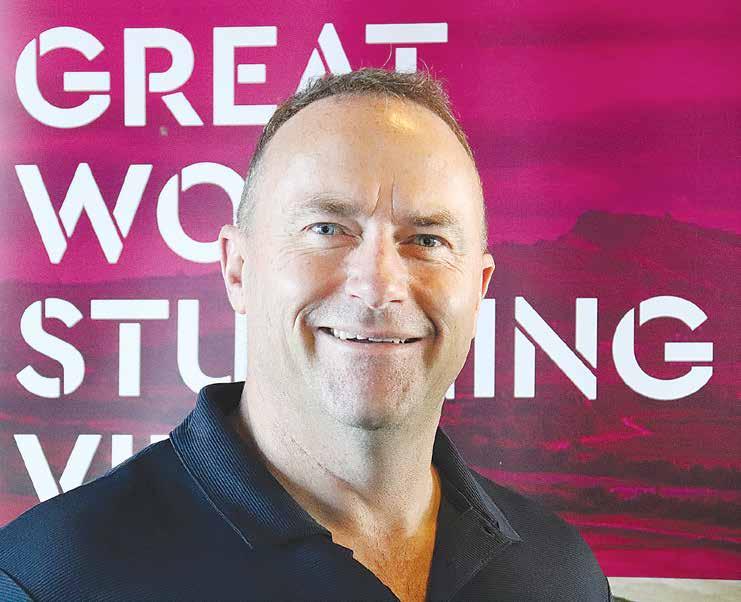
driving down prices to our farmers.
He says it appears with the better grass growth, more stock –both sheep and dairy cattle – are being held on farm, which could result in lower prices and strain on processing plants to deal with a potential bottleneck of stock in the future.
Roche’s other concerns are the conflicts in Ukraine and the Middle East which could impact financially on farmers and growers.
“Then there is China where we have seen the rebuilding of pig herds, which means that demand for other meats has softened, meaning lower prices for our exports.”
situation in the rural community mirrors that of banks and other commentators who have identified factors including the new government with its promise of cutting red tape and unpalatable regulations as reasons for improved farmer confidence.


Roche says there are also other factors.
“I think it is probably a mixture of everything. Certainly, the season has
come through biologically a lot better than we anticipated,” he told Rural News.
“Five months ago, the majority of experts were saying we were in for the largest El Nino
in 40 years building in the Pacific and there was the possibility of catastrophic drought.”
But Roche says some good rains have come though the regions, resulting in good grass
growth, and there has been a slight upward movement in schedule prices. But he adds that these are still very low –not helped by Australian lamb flooding onto the international market and
John Roche says MPI is closely monitoring the international situation and also looking at population growth and changing consumer habits. He says in terms of China, there appear to be no big trends, and while growth there for the coming year is expected to be a relatively modest 5%, this isn’t all that bad news for the world’s second largest economy.
“In the words of one of my farming mentors –panic slowly,” he says.

While wool returns continue in the doldrums, smart sheep farmers are looking for alternatives for a product that currently costs more to get off a sheep’s back than it’s worth. One such initiative is run by husband and-wife team Hayden and Anastasia Tristram who farm at Wanstead in the Central Hawke’s Bay. Mark Daniel reports.
AFTER EXITING a career in the NZ Army, the couple decided to return to Hayden’s roots and took over the lease of a 400ha family-owned property.
This is run alongside an 89ha unit they also own nearby. The steep country operation carries 1500 breeding ewes, complemented by a herd of 60 breeding cows made up of pure Angus and Friesian/Hereford crosses.
Consistently disappointed by the returns from their wool clip, the couple brainstormed and thought about what more could be done with not just the land, but also the wool. After numerous conversations at the end of 2021 – over a beverage or two – they decided to take a shot and get their strong ewe wool turned into a product with added value.
Since 2022, quality fleece wool shorn on the farm is sent for scouring in Napier, then on to Auckland for felting, before manufacturing both there and in Hawke’s Bay. Retailed under the Floating Peaks
brand, the business offers wool pots, seed beds, gift packs, weed mats and a free educational workbook for primary school students called “The Wool Journey”.
More recently, the product range has been added to, with the arrival of Wool Pole Protectors.
All products are 100% wool-based, assembled using 100% cotton thread and 100% biodegradable.
The Wool Pole Protectors have certainly come to the fore, following the ravages of Cyclone Gabrielle, offering a realistic opportunity to replace traditional protectors that are usually made from plastic. Used extensively on the home farm, where record rainfalls and erosion are the norm, the pole protectors have withstood the elements without any issues.
Currently undergoing extensive trial work throughout the country –from Northland through the King Country and Gisborne areas, alongside Canterbury and as far south as Te Anau – users are reporting good results with the new product.
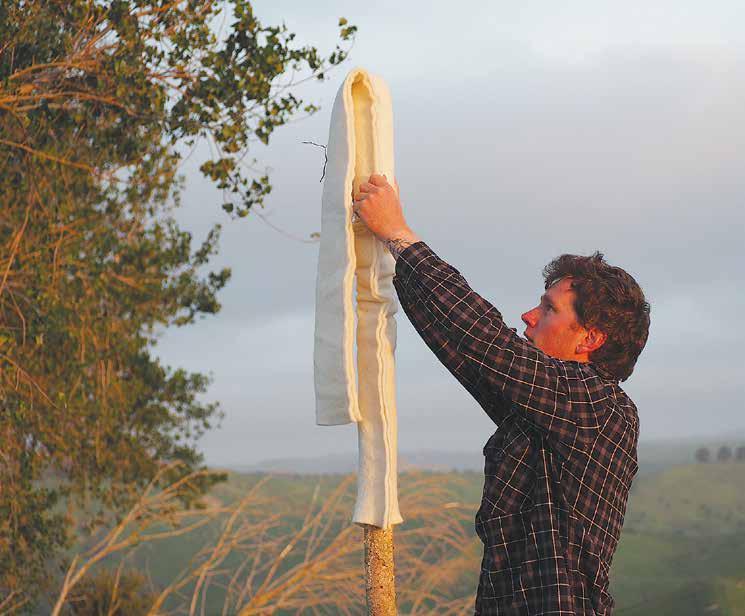
“It’s important to understand that we only use quality fleece wool for our products – there is no place for dags or damaged wool, as trials have proven them less durable,” explains Anastasia Tristram.
THE FLOATING Peaks brand evolved from the elevated position of the Tristram’s home, which offers extensive views of the Porangahau Coast.
On colder mornings, clouds form in the valley below, with only nearby peaks are visible. This gives the effect of plants growing in a bed of wool.
The couple concede that fitting takes slightly longer than the plastic alternatives, but the core material offers a wide range of benefits –not least the protection it offers over the investment in planting trees, often on steep, erosionprone land.
product, with the benefit of being natural, renewable and 100% biodegradable, the protectors are designed to start breaking down at around two years, depending on conditions.
This compares to plastic protectors, which having been split as the tree matures, can be found lying on the ground, in some cases 15 years later.
Manufactured to 100g per square metre grade than the original plastic
Beyond this, the wool protectors are breathable, allowing the bark layer of new plantings to harden off naturally. Meanwhile, the wool is hygroscopic – meaning moisture is absorbed and released as needed, creating the best habitat for the growing tree.
THE URBAN-RURAL divide is a myth.
These are just some of the findings from Farming for Good, a new collection of social science research exploring New Zealanders relationship with farming.
Initiated by the Our Land and Water National Science Challenge, the collection is New Zealand’s most comprehensive study of the social licence to farm, drawing on findings from five research projects conducted during 2022–2023.
“The Farming for Good research collection is about understanding where trust and connection is strong in our food & farming system, where it might be faltering and how to build it back,” says Peter Edwards –senior researcher at Manaaki Whenua Landcare Research and lead on the ‘Connecting Food Producers and Consumers’ research project. The collection also launches alongside a social experiment. The ‘Food & Farming People’s Panel’ brings the research to life. It asks hard questions
of eight everyday people from across the food system – like how climate change makes them feel, what the farmer of the future looks like and how we solve New Zealand’s food security issues.
Some of the findings across the 26-piece collection include:
• Farmers and the public generally define ‘good farming’ similarly. Both agree that it’s about transparency, looking after staff and animals well, maintaining biosecurity, decreasing chemical inputs and following regu-
lations.
“We wanted to add some value to our wool, but more importantly
• 82% of public respondents thought farmers themselves are the most trustworthy sources of information. Followed by scientists, some sources of media and farming industry bodies.
• 65% of the public already feel connected to the farmers and want to learn more about on-farm practices, ideally from farmers themselves.
• There is no deep divide between the general perceptions of urban and rural New Zealanders.
we wanted to create a cost effective and renewable alternative to plastic, while using nature’s finest fibre,” Anastasia adds. “The results have been so good, to date, that we have committed the whole of this year’s clip to the felting process and our biodegradable products. This year is about encouraging farmers and landowners to give Wool Pole Protectors a go and letting the results speak for themselves.”
• The two main concerns about farming across all New Zealanders are environmental impact and rising costs of food/farming inputs.
• Rural and urban people both recognise a disconnect between them. They blame institutions – government, media and supermarkets – for this, rather than each other.
https://ourlandandwater.nz/wp-content/ uploads/2024/03/Farming-for-Good_ Factsheet.pdf
COMPETITORS FROM Oamaru, Ashburton and Tirau are all vying for this year’s prestigious Young Māori dairy farmer of the year title.
The three finalists are 29-year-old Ben Purua, farm manager at Waimakariri Lands Ltd, near Tirau in the Waikato. The farm runs 540 cows.
The second finalist is 21-year-old Hannah Speakman who’s employed as the 2IC for Woodlands Farming on Pine Hill Dairy farm at Enfield, near Oamaru. The property runs 560 cows on 170 hectares of flat rolling country.
While 21-year-old Shayden Gardiner is the assistant farm manager for Ma Taua Dairies, Rylib Group, near Ashburton in mid-Canterbury, is the third finalist. At its peak this farm runs 1120 cows through a newly built 80 bale rotary shed. The Ahuwhenua Young Māori Farmer
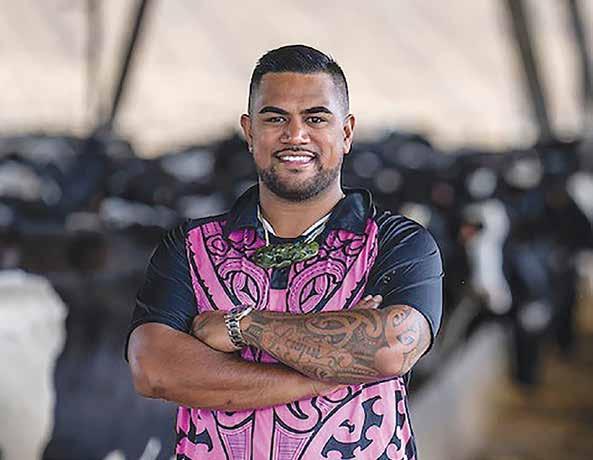
Award was inaugurated in 2012 and is designed
to recognise up-and-coming young Māori in the pastoral and horticulture sectors.
Since its inception, the competition has proved to be popular and attracted high quality entrants – many of whom have gone on to take leadership roles in the agri sector.
The three finalists this year were selected from a number of entrants from around the country.
Lead judge of the competition, Matiu Julian, says every year this award attracts young farmers and growers who are invested in their futures and want to advance their careers, and as judges it is a privilege to be involved. He says providing an opportunity for young Māori farmers to grow and connect as Māori is an investment in the
future growth of the sector. Julian believes what attracts many young Māori to the award is the realisation they are part of a legacy of Māori endeavour, resilience and tenacity.
“The finalists are given unique access to a broad range of experienced industry practitioners and service providers who all understand the importance of growing our young talent,” he told Rural News
“The personal experience as an Ahuwhenua Young Māori Farmer finalist is always profound and emotionally moving.”
The winner of the competition will be announced on May 17 in Hamilton at the same time as the winners in the main Ahuwhenua Trophy competition is held.
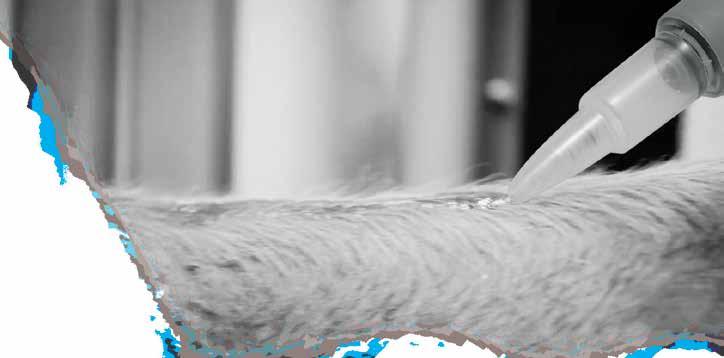




ANZ Rural Bank Manager Roger Fannin has been working in banking for half a century all over Hawke’s Bay – all the way back to the post office days. He shares his thoughts on the good times and bad times and reflects on the events that shaped his career.
WHEN ROGER Fannin started his career in 1973, things were a bit different.
The average house cost $15,500, family meals around the dinner table were sacred, and newly introduced colour televisions were a novelty.
“I was all geared up to go to university to become a teacher, but I was a bit sick of the mundane nature of studying, so I flagged that,” he laughs.
“I worked with my brother putting roofs on houses until my Dad said, ‘son, you’re going nowhere – I want you to make a change’.
His father had a friend at the post office, and there was a position available, starting the following week.
“I had no idea what a post office did,” Fannin recalls.
He began working as a clerk at the New Zealand Post Office branch on the corner of Jervois Street and Karamu Road in Hastings, on a salary of $2,114 per annum.
“It was a one stop shop; we handled savings accounts, postal notes, money orders, foreign currency orders, toll calls from the in-branch booths, and even births, deaths and marriages,” Fannin says.
“I remember marrying a couple of people in the Ōtāne Post office: a woman came in, quite heavily pregnant, and said ‘would you marry us?’
“I just about did a double flip. I had to look up the rule book and find out what I had to do –that was a quite an interesting experience.”
He was promoted to senior clerk in 1978, and a couple of years later was promoted to postmaster and worked in several Post Offices around Hawke’s Bay.
Around 1987, a process Fannin describes as “cor-

poratisation” began to take place.
“The post office was split into three stateowned enterprises: New Zealand Post, Telecom,


We get it, forking out for a new 4x4 right now is a royal pain in the … well, you know! So you want to know it’ll see you right for the next few years without costing you more. With prices from just $13,522 + GST, its 3-year Factory Warranty and this awesome finance offer, the cost of owning a Suzuki KingQuad has never been better. So get yourself down to your local Suzuki dealer today or visit suzuki.co.nz
and Post Office Savings Bank, which later became PostBank,” he explains.
Although it was a time of great change, Fannin says he enjoyed the period.
“At 34, with a young family and a mortgage, it was exciting – it was great,” he says.
“To go into that PostBank environment, you became entrenched, and it encompassed what was good about banking.”
PostBank didn’t offer lending, but that changed in 1989 when PostBank was acquired by ANZ.
“That was really exciting, because we learned so much about the finer points of banking,” Fannin adds.
By 1990, he was the area assistant manager of PostBank in the Hawke’s Bay.
“It involved a lot of travelling around, meeting people, obviously talking with customers and helping to develop the skills of the people that were under us.
He then had the opportunity to go into business banking in 1994 and moved to the Hastings branch on Heretaunga Street.
“That was the beginning of my close involvement with the rural community – around 30 years ago now,” he says.
“I grew up surrounded by orchards and was an orchard owner for a period, so I did have some experience, but not in pastoral farming.
“So, I felt I needed to get a diploma in agri-
ONLY A couple of years into Fannin’s new role, there was a dramatic downturn for the entire Hawke’s Bay agri community.
The unusually warm and dry El Nino weather conditions of 1998 led to a “horrendous” drought.
“Some commentators said it was the worst they had seen in 40 years. It didn’t rain from about December until about May the next year,” he says. “And here I was, relatively new to this position, and caught smack bang in the middle of it, as I had just taken on quite a large portfolio of agri clients.”
He adds that animals were dying, water was scarce, feed was almost non-existent, and farming folk were heavily depressed.
“The demands on my time were huge and there were many sad stories, and requests for capital to get businesses back on track,” Fannin explains.
“There were also some really difficult discussions –where I wasn’t able to be the ambulance at the bottom of the cliff.”
Sooner or later, all things change, and as soon as the first proper rain came, the land sprang back to life.
“Hawke’s Bay is such a fertile place, and it just bounced back. You never would have known it was a drought, apart from the fact that it cost a lot of money.” Fannin says that being able to help people through that difficult period brought him immense satisfaction.
“There have been droughts since then. One of the messages we try to get out to our clients has been that preparedness and diversification can help you through and protect you when events like this happen.”
business management, in order to gain some acceptance and to know what I was talking about – it was a really good learning curve.”
Fannin says banking has gone through many periods of change and will likely continue to.
“I’ve generally welcomed change and I’ve seen lots of it.
“Moving from paper and pen to computerisation, that must be the biggest change I’ve seen. I’ve
had to learn as I’ve gone along,” he explains.
“It’s a bit like being on a train, roaring down the tracks, and if you don’t want to accept the changes you need to get off – but generally, I think I’ve managed to stay onboard.”
In 1996, the bank’s business and agri customers were split into separate centres, and Fanin was fortunate enough to be chosen as the agri manager for all of Hawke’s Bay.

GOVERNMENT AND the red meat sector are teaming up to help eradicate the significant impact of facial eczema (FE) on farmed animals.
The $20 million partnership –jointly funded by Beef + Lamb NZ, the Government, and the primary sector – aims to save farmers an estimated NZ$332 million per year on FE losses, as well as reduce their reliance on zinc dosing as a preventative measure.
FE can reduce animal growth rates, fertility and production while significantly impacting animal health.
At present, there is no cure for the disease, with limited management tools available.
FE causes an estimated $332 million impact annually to farmers through slower livestock growth rates and can cause the loss of a significant amount of stock during severe outbreaks.
The disease, associated with a toxin-producing fungus, not only affects the financial bottom line for farmers but is a pressing animal health issue. With climate change, the disease is expected to spread more widely across New Zealand.
Agriculture Minister Todd McClay says the program will support multiple approaches, building on research, and bringing together many of the country’s top researchers.
“Prevention solutions such as early detection, mitigation and management options are key to the programme. Decision support tools will also be collaboratively developed with farmers and rural professionals.”
McClay added that this will be complemented by the FE breeding value for dairy cows recently announced by the Livestock Improvement Corporation.
Beef + Lamb New Zealand (BLNZ) says it welcomes the Government’s $8.3 million commitment to combat FE.
It says the Eliminating Facial Eczema Impacts (EFEI) programme is valued at $20.75 million over a seven-year period and is a collaborative effort.
B+LNZ has committed $9 million, alongside the Government’s $8.3 million funding commitment through the Sustainable Food and Fibre Futures fund with the remaining inkind funding coming from contributions from 13 industry partners.

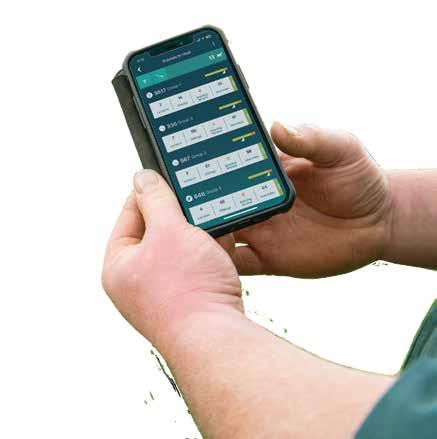
“Recognising the severe impact of this disease on farm productivity, profitability and animal health, the collaboration between B+LNZ, the Ministry for Primary Industries (MPI), and partners marks the most significant step forward in decades towards managing a disease that has been impacting sheep, beef and dairy farmers for over 100 years,” the industry body says.
The funding announcement was made earlier this month by Minister for Agriculture, Todd McClay and B+LNZ board chair, Kate Acland at the Central Districts Field Days in Fielding, with Prime Minister, Christopher Luxon in attendance.
“This announcement is timely, giving a confidence boost to our sector as we grapple with the impact of two years of poor returns coupled with recovery from major weather events and a challenging summer for many,” Acland says. “The EFEI programme will undoubtedly improve farm productivity and profitability overtime.”
She adds that by eliminating the impact of FE, will see improvements in both the physical health of livestock, increased productivity and better returns for our farmers.
“SenseHub® Dairy collars provide valuable risk protection for our business by removing the reliance on a single individual for cow selection during AI. This really reduces the workload with mating, and frees up time and resources for other things.
Our advice to anyone considering starting their SenseHub journey is: don’t hesitate—dive right in! It truly has the potential to revolutionise your life and your farm operations.”
Alliance Group chair Murray Taggart is looking forward to spending more time on farm as he steps down after a total of about 18 years on the meat co-operative’s board, including the last 10 years as chairman. Nigel Malthus reports…
“THAT’S PROBABLY long enough,” Taggart tells Rural News.
It is perhaps a bittersweet end to his time at the top, coming during a downturn in the market, especially for lamb, which saw Alliance post a loss before tax of $97.9 million in its 75th anniversary year.
“I don’t think you ever get the fairy tale ending in any of these things,” Taggart adds.
“I think anyone that goes into them thinking you’ll somehow rather crack it and that’ll be the end of the journey –that’s not how it works.”
He says it is a journey with no end.
“Everyone that gets involved in any of these businesses as a director or as an executive is trying to improve the performance of the business all the time.
“You can be doing the best job in the world, but if the global economics cycle is against you, then when the tide’s going out, you can’t always swim against it.”
Speaking to Rural News on the family farm
near Cust in North Canterbury, Taggart says it doesn’t matter whether it’s on farm, in the processing sector, or the export sector, “it is just really tough at the moment”.
“We need every link in the chain to be profitable, otherwise you don’t have a chain.”
It is not the first downturn that he has experienced.
“I reckon I’ve seen this four times, this cycle. Once when I was a banker, once soon after I came farming, once in 2012 when I was a director, and once now as chair,” Taggart explains.
“Everyone thinks: ‘Gee, how can we stop this happening again?’ but at the end of the day, you’re at the mercy of international supply and demand, which is driven by the health of the international economy.”
Taggart grew up on the farm but says it was not the original plan for him to take it on. After Lincoln University, he worked as a banker, before looking around for a farm of his own to
buy. However, he then returned to the family farm in 1990 by buying out his brother who chose commercial crayfishing instead.
“That’s how we ended up here and it’s been pretty good to us, especially when we got irrigation in the late ‘90s. That’s a game changer in this part of the world.”
Perhaps ironically, for a leader of the meat industry, the 732 hectare farm is now predominantly cropping, producing cereals and grass, clover and vegetable seeds, while finishing lambs and “a few” dairy culls between crops.
“It’s basically an arable farm now,” says Taggart. “It didn’t used to be, but with irrigation and trying to pay the bills, it really comes down to you either going to dairy or some other intensive land use.”
The farm was originally about 90% sheep but now gets only about a quarter of its income from livestock.

“WHEN I first went farming, I was farming for six weeks when the Wool Board removed the supplementary minimum price,” Taggart explains.
“So, I never got to enjoy any of the halcyon days of the wool industry.”
He says that, up until that point, wool had been 50% of their sheep income, but now, it is nowhere near even covering the shearing cost.
As for wool, Taggart says various
groups are trying to recreate demand for its traditional uses. But he struggles to see them ever lifting wool to a point where farmers will be selecting aggressively for it again. “To me, it has to be completely new uses and much higher value channels. Certainly, the sort of stuff that WRONZ is working on, with its new uses programme, feels like it’s got potential. But there’s probably a way to go before we really find out.”
what the rest of the population gets. It’s not some hand out.”
Taggart says he has been only a weekend farmer in recent years and he’s looking forward to getting back into it –but it is his son Roscoe who now runs the farm.
“He does a better job of it than what I used to. So, I don’t want to start wading in and dragging down the farm performance by thinking I’m going to run the thing again. I will do as I’m told. I find what works best.”
Meanwhile, Taggart continues to chair Taumata Plantations Limited (formerly Carter Holt Harvey Forests), which he describes as “a forestry company but a real one, not a carbon one.”
He is also a director of FMG insurance and, by way of giving back to the local community, is on the board of a local medical centre.
Taggart says it has been a dry summer, with the dry compounded by irrigation restrictions. The farm is currently carrying only about 3000 lambs.
happen at the moment.”
“We would probably normally have double that, but it’s not looking like that’s going to
However, the farm is not in the “dire straits” of some further north in Canterbury, or in Marlborough, where a medium-scale adverse drought event has recently been declared.
How mainstream media portray drought assistance “always annoys me,” says Taggart.
“All it means is the farmers get the same access to social welfare as
“It’s a tough industry. But it’s also enormously rewarding. At the personal level, I’ve just learned so much. I’ve had some amazing experiences that I never would have thought I would have.
“I’ve met just so many really interesting people. Nice people. The lasting memories you have is the people you meet.”
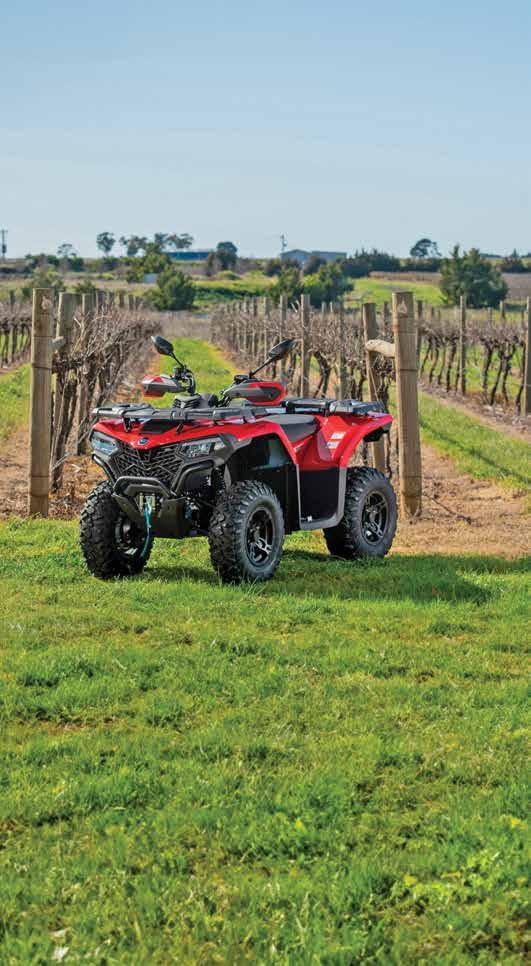
With refinements across the board, the new-generation CFORCE 520 EPS is not only stronger and lighter but has less vibration, a tighter turning circle, is more comfortable and has a smorgasbord of user-friendly attributes such as electronic power steering.

The all-new UFORCE 600 is a package that represents a quantum leap in design, performance and ergonomics, with key updates including electronic hill descent control and a limited slip rear differential. The UFORCE 600 EPS is truly the stronger all-rounder and is ready for duty. Now with four different UFORCE 600 models to choose from.
David Anderson reflects on the agri-sector as he steps down from his editor’s role.
IN 1991, freshly graduated from a journalism course – after a period farming, shearing and working in the meat processing industry – I walked into the offices of Rural News. I was lucky enough to secure a job as a junior reporter as the fledgling publication that was in the process of changing, with the aim of tackling the real issues affecting the country’s all-important rural sector.
My first editor, the indomitable Ron Clark, was a true newspaper man who believed that NZ’s farming sector lacked serious coverage of the issues that it faced, and that Rural News was the perfect outlet to do this. Backed all the way by publisher Brian Hight, what was created then still exists today: Covering the good, bad and ugly of NZ’s agribusiness sector – without fear or favour – just reporting on the news happening in the rural sector.
Ironically, my rural journalism career began with a new National-led government picking up the pieces of a shattered economy and severely depressed rural sector hit by major reforms, in the aftermath of six years of a Labour-led government. Labour had been voted in on a high promise of fine ideas, great words and led by a charismatic leader, who ended up quitting and running halfway through its second term.
Around the same time, farmers were unhappy with the producer boards and the fact they could not even vote directly for their own representatives. They changed the system, believing it would see much better voter turnout and higher quality representation. Fast forward to today, and a mere 12% of red meat producers bothered to vote at the latest Beef+Lamb NZ annual meeting.
Another big change was the painful formation of Fonterra from the proliferation of numerous dairy co-ops dotted throughout the country into one of the biggest and most successful dairy companies in the world.
It is impossible to summarise more than 30 years of this dynamic sector’s events and happenings in a few words. However, what I can say is that things will continue to change, farmers will adapt and the industry will survive and thrive.
It’s been an absolute privilege to have played a small role in NZ’s most important and vibrant sector.
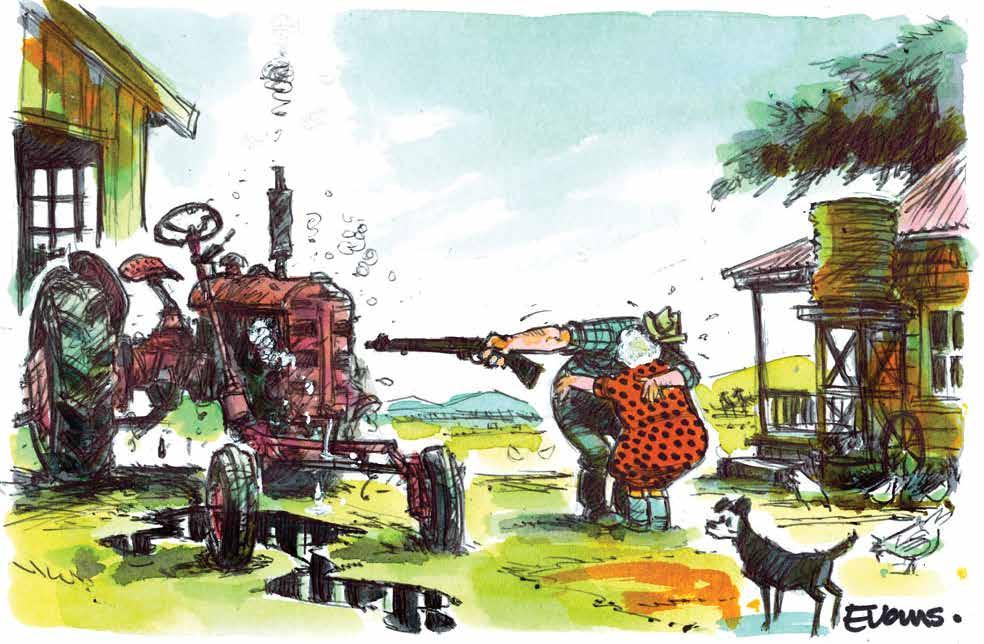
Your old mate is still somewhat gobsmacked by sheer stupidity and lack of understanding by Beef+Lamb NZ’s board in asking for a pay rise at this year’s annual meeting. He also takes issue with chair Kate Acland’s rather spurious argument that BLNZ’s director fees are far lower that other comparable levy body board remuneration.
On first glance this may appear to be the case. However, even a little bit of research shows that BLNZ directors are not doing it so tough. According to its 2023 annual report, DairyNZ’s chair receives around $95k annually and each farmer director around $50k. Meanwhile, BLNZ’s chair gets $76k and each farmer director around $38k. However, if you add in the director fees they also get as being directors of the NZ Meat Board –Acland’s stipend jumps to $107k a year and each farmer director to $55k.

Speaking of BLNZ profligacy, the Hound reckons the not-so-badly paid board should be paying more attention to what its staff are actually spending farmer levy fees on. Apparently, for the past four years, BLNZ has been using hardpressed levy payer funds to prop up a privately-owned magazine publisher. For some reason, staff at BLNZ have decided that the country’s meat producers should be subsidising a basically glorified ‘Women’s Day’ glossy magazine called Shepherdess. One would have to seriously question the value to the county’s struggling meat producers subsidising such a niche publication with limited readership and distribution. This looks very much like one of those woke, diversity spends and an area where some savings could and should be instantly made!
As this old mutt suggested in the last issue, MPI looks a very good candidate for some serious public sector savings that the government is currently looking for. This follows news that the MPI has started consulting staff on proposals that will see 384 jobs cut as it aims to trim its workforce by 9%. Around 40% of those roles are currently vacant and will not be filled. In the last five years alone, MPI have employed 1100 new staff. Of course, as soon as the cost cutting was announced, the public service union has tried to run a scare campaign claiming these cuts will see the likes of M. bovis and Psa programmes gutted and risking NZ exports. However, the fact is Psa was wiped out years ago and currently there are no active M. bovis cases in the country. What does the union want? Thousands of underemployed bureaucrats sitting around in offices, twiddling their pens on $100k plus a year?
Get real!
Your canine crusader was truly impressed by the almost unanimous support given by politicians of all stripes in Parliament to the recent passing of legislation for the NZ/EU free trade deal. Strong support was given by the members of the coalition Government – National, ACT and NZ First. Of course, the Labour Party, which did much of the heavy lifting in securing the deal under Damien O’Connor’s leadership, were also big supporters. Surprisingly, so too were the Green Party – not well known for their support for commerce or commonsense – who back the deal. However, the Maori Party voted against it. Are the supposed guardians of all things Maori not aware of the huge reliance on the agricultural trade sector by Maori incorporations who stand to benefit hugely from better access to the EU? Or of the special parts of the deal that specifically refer to and respect Maori customs? There are none so blind who will not see.


WHEN MYLES Allen, a professor of geosystem science at the University of Oxford, talks, I always suggest it’s worth a listen – particularly when he shares information that can help improve sustainability in the cattle sector.
When he spoke at CattleCon in February, his message – although rooted in complex science and based on complicated mathematical calculations – was as plain as day.
“Emissions … from the U.S. livestock sector have caused very little additional warming since 1990,” he said.
Let’s be clear: We need to ensure we do not increase emissions and reduce emissions as we can. We can gain efficiencies by doing so and help meet increasing demand while limiting environmental impact.
So why is animal agriculture – and particularly the beef and dairy sectors – constantly taking it on the chin for methane emissions? Why do people think giving up animal-source foods will save us from climate change?
There isn’t just one reason, but one important reason is that for a long time, we looked at methane through the wrong lens. Our yardstick for measuring the warming potential of greenhouse gases was GWP100, where methane is treated as if – in Allen’s words – “it’s a form of carbon dioxide” that continues to cause warming indefinitely like CO2 does.
In fact, it doesn’t. Unlike carbon dioxide, a stock gas and long-lived climate pollutant, methane is a flow gas with a short lifespan. True, it is more potent than carbon dioxide, but only for the first decade after it’s emitted. Beyond that, it’s broken down into CO2 and water vapor.
To their credit, Allen and his team at Oxford realised the shortcomings of GWP100 and went to work to develop a metric
that gives us a far more accurate picture of the warming caused by methane.
The result is GWP*, which has clarified and revolutionised the way we look at methane emissions and, even more importantly, allowed us to target it more effectively.
However, it is not without controversy. Heated discussions are arising over the fact that GWP* may be scientifically correct but nevertheless unfair to use.
Certain groups dislike GWP* because it shows that animal agriculture can meet demand and significantly reduce its climate impact by committing to strong methane reductions. Other naysayers believe GWP* gives a pass to developed regions with advanced livestock sectors.
For U.S. farmers and ranchers, and many in other developed regions, production isn’t increasing dramatically because population and corresponding demand for animal-source foods are more stable than they are in developing regions. Thus, GWP* can make high emitters look like they aren’t impacting current temperatures, provided they keep their emissions constant.
On the other hand, many developing regions are experiencing significant human population growth and corresponding increases in demand for animal-source foods to better their nutrition.
To score a GWP* win, these producers must cut emissions at the same time they are being asked to produce more animalsource food to feed rapidly growing populations. Their carbon footprint per glass of milk or ounce of meat is higher than it is for U.S. ranchers and farmers. Thus, increasing output in developing regions will come at a higher emissions price relative to regions that have more advanced animal agriculture systems.
No credible sources
debate the physics behind GWP*. No one is advocating that we need to stop worrying about methane or give it a pass. We can embrace GWP*
and still work on ways to do better by it.
A one-size-fits-all approach isn’t appropriate as we look to tackle the environmental impact
of production in a diversity of regions.
• This is an edited version of an opinion piece that ran recently in the AgProud Idaho publication. Frank Mitloehner

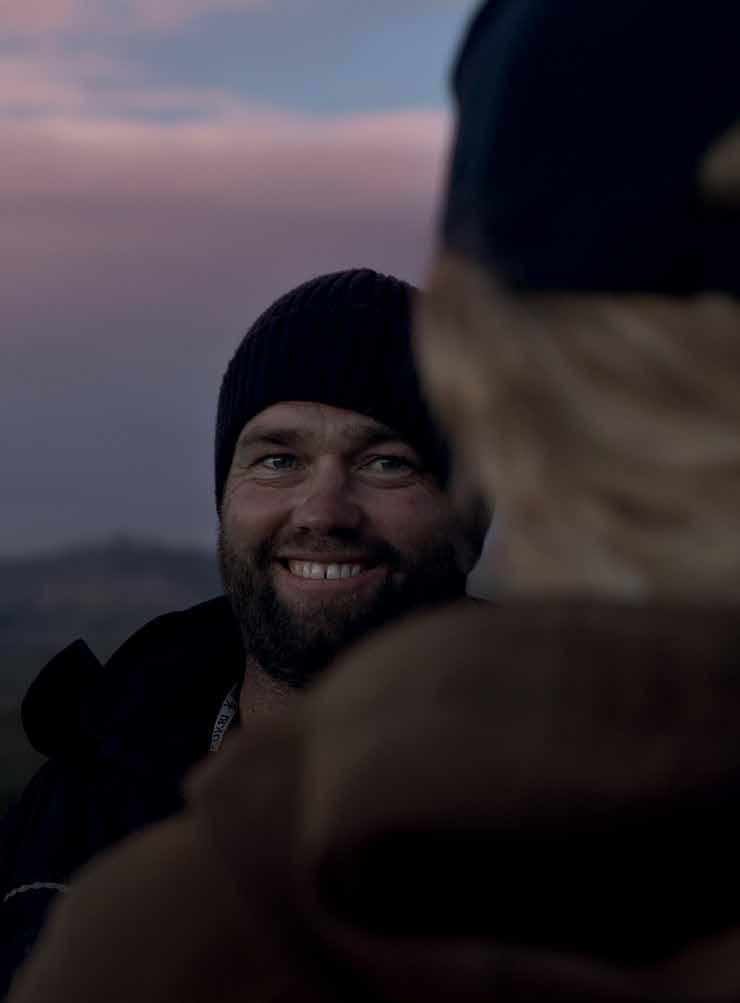
Let’s talk better parasite management.
Doing nothing differently is not the answer to drench resistant worms in sheep and cattle. It’s time to change our approach to parasite management through testing, strategic drenching, grazing management and genetic solutions.
Change
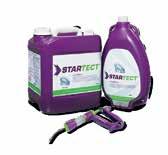



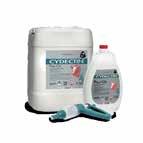


A CHANGE of government and the possibility of better markets prices has lifted farmer confidence, but it still remains fragile.
Rabobank’s first Rural Confidence Survey of 2024 has found New Zealand farmer sentiment continues to surge higher – despite overall confidence remaining low.
Completed in early March, the survey found while 38% of farmers still expect the performance in the broader agri-economy to worsen in the coming year, this is down from 58% saying the same last quarter.
However, the amount
expecting conditions to improve went from 11% to 22% and those expecting conditions to remain the same went from 29% to 39%.
Broader confidence in the agri-economy rose from -47% to -16%.
Rabobank chief executive Todd Charteris says while confidence was still back on what the bank would like to see, it was pleasing to see farmer confidence across all sectors continuing to improve.
“Growers’ net reading on this measure rose to +22% and they continue to remain upbeat about the year ahead off the back of a strong season for most horticul-

tural products and robust overseas demand for their products.
“Dairy farmers are also considerably more
positive than last quarter (up to +5% from -20%) largely attributable to Fonterra lifting its farm gate milk price for the
23/24 season to a midpoint of $7.80 kg/MS in February – a move which came off the back of six consecutive GDT event price lifts across late 2023 and early 2024.”
While sheep and beef farmers also had significantly higher expectations for their own businesses, continuing underwhelming sheep prices have kept the overall net reading low (-31% from -62%).
Among farmers with an optimistic outlook, government policy is the major factor cited for holding this view (nominated by 28%). Other factors that came through in the survey as reasons for optimism included rising
commodity prices (20%) and overseas markets/ economies (17%) with farmers’ expectations for their own business operations lifting to -9% from -31% last quarter.
“It does seem clear that primary producers are more comfortable with the direction of government policy under the new coalition government than they had been under the previous administration,” Charteris adds.
Among those expecting conditions to worsen, rising input costs continued to be the main source of farmer concern (63%). Falling commodity prices (45%) and rising interest rates (42%) are
the next most significant concerns among primary producers with a pessimistic outlook.
Escalating tensions in the Red Sea and its potential trade implications are also a cause for concern.
Charteris says the major black spot in the survey is the rise in farmers self-assessing their own operation as unviable, with this number climbing to 9% from 6% last quarter (but down from 12% June 2024).
“While the general uplift in confidence registered in the survey is positive, the rise back up to 9% does illustrate just how difficult the 23/24 season has been.”


Some interesting and positive insights into the value of regenerative agricultural practices seem to be emerging from the early stages of a seven year science-based study comparing conventional farming and regen agriculture. Peter Burke reports…
most comprehensive programme to compare contemporary and regenerative pastoral practices, with research sites at Massey University and Lincoln University.
It brings together universities, Crown Research Institutes and industry partners to assess the suitability and relevance of regenerative agriculture in this country. In essence, it’s about gathering quality scientific data to measure multiple aspects throughout the farm system, exploring how different pasture mixes and management practices impact.
Until now there has been no hard data available to prove one way or the other the comparative merits.
The Massey University trials involve sheep and dairy farmlets at the Palmerston North campus, comparing standard and diverse pastures under contemporary and regenerative management treatments.
On the dairy farmlet, cows are being run at 2.5 cows per hectare, while on the sheep farmlet, stocking rate varies between 12 and 14 ewes per hectare, depending on the pasture and management treatment. The farmlets also have contrasting soil types with the sheep on a poorly drained soil and the dairy cows on well-drained soils.
Associate Professor Lucy Burkitt is leading the soil component of the project with a large team of technicians, scientists and Massey ag students who are all working on different aspects of the trial. The farmlets are being run in different
“Given this, we are keen to see more data on how the pastures and management treatments may affect soil compaction and water infiltration. So far, however, we have found no difference between the different treatments in terms of nitrogen leaching.”
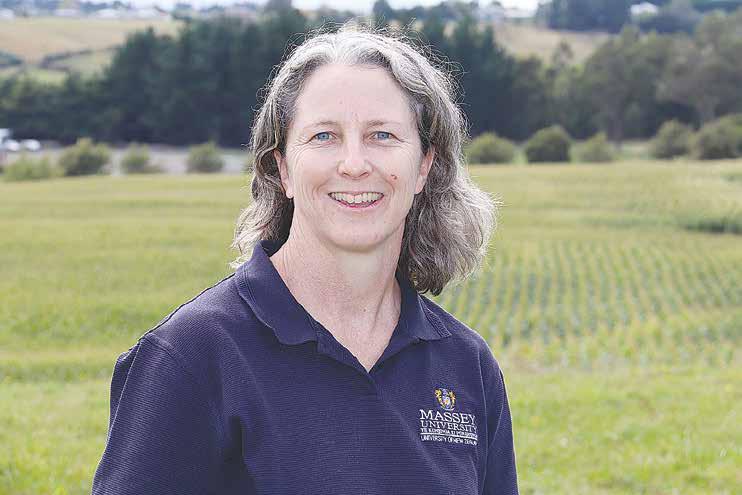
THE END game of this research project is to look for benefits for farmers and consumers.
Consumers are becoming extremely influential in terms of how they want their food produced.
From the dairy side of the programme, the goal is to get an accurate handle on milk production, its quality and even the taste of milk produced by cows in the different treatments.
ways or given different treatments to measure changes in soil, pasture, animal production and environmental losses.
“For example, regenerative management involves longer grazing intervals, more pasture left behind after grazing and application of different soil amendments,” she says.
Whenua Haumanu has just been running for two years and Burkitt says it’s far too early to draw any significant conclusions.
But on the dairy regen pastures they have seen some evidence of higher worm numbers and a decreased presence of some mesofauna species. These are tiny, barely visible microorganisms, which have an important role in regulating ecosystem production and ultimately improving soil health.
“Given this, we are
It should be noted, however, that if and when cows from the trial are culled, no research will be carried out on the meat quality. But researchers will be looking at all aspects of the lamb carcasses when these animals go for processing.
Burkitt says the trial will go beyond Massey and they are working with a group of farmers in Taranaki as part of a separately funded Pivot project, as well as with Dairy Trust Taranaki, Northland Dairy Demonstration Farm and On Farm Research in Hawke’s Bay.
“We are working with other regenerative farms and applying some of the things that we have learned from them,” she adds. “We have already had lots of local groups of farmers, both regen and contemporary, as well as some from outside the district coming to find out what we are doing.”
Late last year they held an open day which attracted more than 200 people.
Burkitt adds that applying some robust science and gathering quality data for seven years will help them understand the merits of conventional and regenerative agriculture practices.
keen to see more data on how the pastures and management treatments may affect soil compaction and water infiltration,” Burkitt told Rural News “So far, however, we have found no difference between the different treatments in terms of nitrogen leaching.”
Apart from the obvious focus on soil biology, diversity and structure, Whenua Haumanu is also looking at animal production, health and welfare, quality of milk, meat and wool products, nutrient leaching, methane and nitrous oxide emissions and carbon capture and storage.
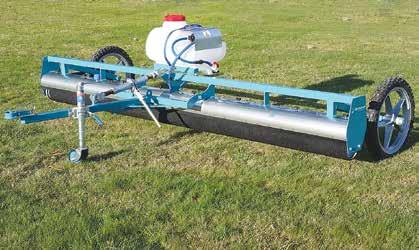

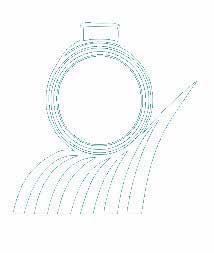

An initial trial of an app, funded by Beef + Lamb New Zealand, has demonstrated significant results in reducing drench inputs in lambs during a small-scale study.
THE TRIAL showed that there was a reduction of up to 57% in drench use without any negative effects on the productivity of winter lambs.
The Smartworm mobile phone app, used with an eID tag, leverages liveweight gain and other farm-related information to identify animals in real time that are most likely to require a dose of drench. This concept is called targeted selective treatment (TST).
The benefits of TST include:
Reduced selection intensity to limit the development of drench
THE SMARTWORM app was developed in Ireland by Cotter Agritech based on TST research carried out by Andrew Greer from Lincoln University and Fiona Kenyon from Moredon Research Institute who pioneered TST. Farmers interested in using Smartworm, can contact Cotter Agritech directly for a subscription price at www. smartworm.nz or info@cotteragritech.com
This is critical as a technique for sustainable internal parasite management as it reduces the percentage of a worm population exposed to drench at regular intervals.
Reduced total drench used.
This leads to savings
labour associated with drenching and unnecessary treatment of animals.
Potential net savings of $0.59 per lamb were observed by utilising the app in this trial.
The B+LNZ Research team worked with Dave Warburton, Vet Services Hawke’s Bay and Andrew


sity, to carry out the trial on two properties in Hawke’s Bay and one in the Wairarapa.

Because we care about your safetywhile working.

TPW Xpress Woolpress
With industry leading safety features, the #1 selling and most trusted woolpress helps to keep you and your workers safe in the shed. The TPW Xpress now comes with the new indicator with audible and visible alarms that let you know when you’re approaching the target weight.
Watch our equipment in action!


drenching at each interval (“TST treat” or “TST don’t treat”).
The trial, which ran for three months from mid-May to mid-August 2023, included 1114 animals across the three farms.
shows that the Smartworm app is shaping up to be a great example of a tool that could be used to work smarter when making decisions around frequency of drenching.”

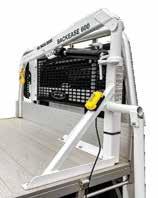




The world’s leading shearers trust the #1 selling shearing plant in the world, winner of multiple WorkSafe awards. The Evo delivers industry leading safety features, impressive performance and superb reliability
TPW Backease Hoist
Industry professionals trust the versatile, compact and cost effective TPW Backease Hoist to safely lift loads of up to 600kg with extendable 1.2 - 1.8m boom. At only 78kg, it’s easy to install with no loss of load space and features hydraulic lift and pressure regulated downwards movement
The study revealed reduced drench usage ranging from 37 to 57% over the trial period, with only a marginal impact on liveweight gain. The TST group, guided by the app, averaged 327 grams lighter in liveweight at the end of the 90-day trial.
At each property, lambs were categorised into a control group receiving regular treatment every 28-30 days (“blanket treatment”) and a TST group where the app determined which animals needed
Faecal samples were collected during weighing intervals for faecal egg counts (FEC), complementing the app and increasing confidence in identifying the number of untreated animals.
The findings suggest that the Smartworm app holds significant promise for New Zealand farmers in reducing drenching inputs for lambs.
“We know times are tough on farm right now, so it is more important than ever that we focus on research into practical on-farm solutions to improve productivity and profitability for farmers,” says Dan Brier, general manager - farming excellence, B+LNZ.
“While it is still early days, the initial trial
He believes the app could help farmers reduce the amount of drench they are using without compromising on animal health, saving them money.
Mark Guscott, a farmer in the trial says once they got past the startup tech issues it worked well.
“The app was straightforward to use. The final data showed only about half the lambs needed drenching so that to me is quite exciting as we’re trying to use less drench overall as part of our future plans. This app looks like it could be part of that future.”
Meanwhile another farmer in the trial Andrew Greer says relying on the constant development of new anthelmintics puts the future viability of any farm at risk.
“This trial demonstrates that farmers do not need to treat all animals all the time, leading to a substantial improvement in drench sustainability.”
B+LNZ are now funding a second stage of this project, trailing the app on an increased number of farms, including in the South Island, from February to May 2024. This second stage aims to understand how or if TST can be confidently used in areas with barber’s pole and evaluate any further improvements to the app.
A WAIKATO cattle farming family have been fined $23,000 for failing to provide sufficient food and care for their animals, resulting in more than half a dozen animal deaths.
Shane Ross Quigley (49), Colin Ross Quigley (75) and Margaret Heather Quigley (72) were sentenced in March on four charges under the Animal Welfare Act in the Morrinsville District Court, following a successful prosecution by the Ministry for Primary Industries (MPI).
Between July and August 2022, animal welfare inspectors and a veterinarian inspected the cattle at the Quigley’s 26-hectare Matamata farm, resulting in charges
being laid. “We found the Quigleys were raising about 158 mixed breed and 21 Limousin cattle, which was above the appropriate stocking rate for the feed available at their farm,” says MPI acting regional manager, animal welfare and NAIT compliance, Bianca Upton. “Seven dead cows were discovered on the property, and the grass cover for grazing animals was minimal. They were also providing lowquality supplementary feed – some of it mouldy and rotten.” Upton says most farmers do the right thing for their animals, but the Quigleys were not living up to their welfare obligations and more
of these animals were at a high risk of dying from starvation.
During the first visit by MPI, 39 cattle were visually assessed as being emaciated and the Quigleys were issued a legal notice of direction to immediately address these animal welfare issues. A further inspection found a young bull, a Limousin cow and a young heifer were in serious need of veterinary care because of conditions such as worms and emaciation. All three animals were euthanised due to their poor health.
“These animal deaths were preventable if the Quigleys had been meeting their animal welfare responsibilities,” says Upton.
Made in New Zealand looks at the wealth of design and manufacturing ability we have in New Zealand, creating productive and cost-effective products for the agricultural sector. This week machinery editor Mark Daniel takes a closer look at TRS Tyre and Wheel Limited with managing director Nigel Sherborne…
When was the company founded, by whom and why (was it to solve a problem or market a product)?
TRS was established in1977 as a small family Tyre repair business and quickly grew to become the largest distributor of agricultural and industrial tyres and wheels in NZ. After changes in ownership in 2003 and 2017, it was acquired by Trelleborg Wheel Systems in 2018, who themselves were taken over by the Yokohama Rubber Group, making TRS part of the fifth largest tyre manufacturer in the world and the largest in agricultural tyres.
Where are you located and how many people are employed?
Five warehouses and fitting centres, in Auckland, Hamilton, Whanganui (incl. Wheel Manufacturing), Christchurch and Invercargill, support customers nationwide, with a staff of 40 people supporting over 600 customers
What are your key products and which markets do they serve?
Roadlux TBR, Ecomega Port & OTR and now Yokohama OTR & Port Tyres.

Are your products unique –if so, what are the four key benefits? If not unique, what are the four unique selling points?
While wheels may look the same: they’re not… A farmer may need their tractor or implement to be a particular width to fit through gates or set at precise cropping widths to avoid damaging produce. TRS works with tractor manufacture specifications for transmissions and inter axle ratios to produce the appropriate tyre and wheel setup to meet the needs of
TRS offers bespoke, locally manufactured Agricultural MPT Spreader Truck, Row Crop, Duals, Tractor, Implement, Industrial (Forklift, Material Handling, Port) and Construction/OTR Wheels built to the exact specifications required by our customers. We also import and distribute our own Trelleborg brand, Mitas and Cultor Agri, Materials Handling and Construction tyres.
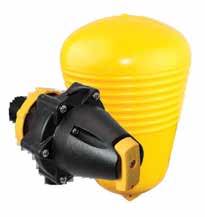
the operator withing the operating tolerances of the tractor or machine.
Our tyre optimisation service, available to all Trelleborg and Mitas customers, allows operators to get the most out of their tyres, to increase tractor productivity and output. An on-site visit to weigh the axle loadings and weight distribution, then provide advice on recommended tyre inflation and ballast. Adopting the right pressure can reduce running costs by up to 20%!
Looking at an ever-evolving market, what changes have you made over the last few years?
There are now far more machinery brands operating in NZ than 20 years ago with the emergence of more manufacturers from the Asian sub-continent. We continuously bring our business up to speed with any new brands, with our designers and engineers regularly in the field at dealerships and field days, measuring wheels and noting OEM offsets and tyre combinations.
Larger tractors are

now entering the market, with pastoral farmers taking 120-180hp units that arrive in NZ on wider tyres from the factory. While 18.4R38 tyres were the norm, we are now seeing 600, 650 and 710 section tyres as far more common place.
This has meant we have evolved our wheel business to suit these trends, including moving from the typical equal-sized duals set ups to more step-down dual configurations.
What has been the company’s greatest success since its formation?
Retention of key
people has been one of our greatest successes, with our top 10 tenured staff, having been with the business for more than 165 years collectively, alongside several others who are approaching the 10-year timeline. Ultimately our success lies with our customers, and we focus on building customer relationships & partnerships that span just about as long. If you were approached by someone looking to start a business, what would be your three key pieces of advice?
Set yourself up for success by surrounding


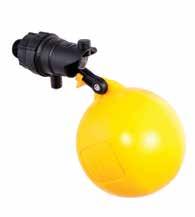

yourself with people that have knowledge and are willing to share that and support your business goals, while also never being afraid to ask questions.
Where do you see the company in the next three, five and ten years?
The next 3-5 years are extremely exciting for us now we are part of the Yokohama Rubber Group. We began landing Yokohama OTR and Port Product in March with the option to solidify another top brand in the construction, mining, quarry and port segments.

The next 3-5 years are extremely exciting for us after becoming part of the Yokohama Rubber Group.
We began landing Yokohama OTR and Port Product from March, giving us the opportunity to solidify another top brand in the Construction, Mining, Quarry and Port Segments. For the next 2 years, it will be very important for us to help support the agricultural sector as it recovers from debilitating events such as Covid, natural disasters and the global economic downturn.


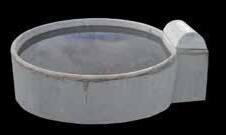
Power Farming Group has launched a flagship New Zealand facility in partnership with global construction manufacturer JCB Construction.
Located at Pukekohe, south of Auckland, the new complex was officially opened in March by Prime Minister Christopher Luxon.
Power Farming is New Zealand’s most successful family-owned agricultural business with more than 75 years’ experience and 21 dealerships across the country. The company say its latest collaboration with JCB Construction is a fine fit for Power Farm-
ing, given that JCB has become Britain’s most successful family-owned business since their formation in 1945.
Power Farming executive director Brett Maber says the purposebuilt facility represents a multi-million-dollar investment for the business.
“We are very proud to establish this new branch alongside JCB Construction.
“This undertaking reinforces our commitment and confidence in the agricultural sector, and now for the first time also positions our brand for future growth in the
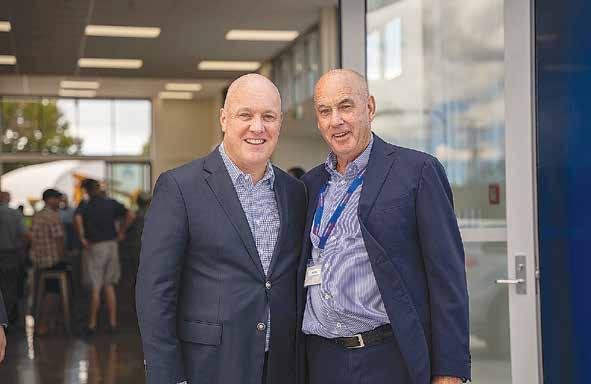


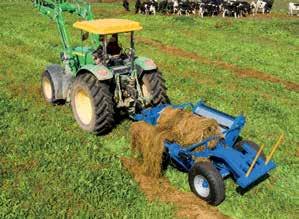



construction sector too.”
Prime Minister Luxon acknowledged the importance of brands like Power Farming and JCB Construction to the New Zealand economy, and the respective roles they can play in contributing
towards the government’s future-focussed infrastructure plan.
“This is a great example of a fantastic New Zealand business investing in construction and agriculture, and it’s fantastic to see a family-
owned business wanting to take the step of investment to make sure we can serve the agriculture industry alongside the construction and building industry in a much better way.”
JCB’s group executive director from the UK, George Bamford, who also attended the opening, along with JCB’s director for the pacific region, Richard Myles, says the company is very optimistic about the platform this partnership presents for their brand in New Zealand.
“It’s great to see Power Farming investing in the JCB brand and expanding into the construction business. We are very optimistic about a bright future for the Power Farming Group Construction team as we raise the brand profile in the New Zealand market with this exciting partnership.”
KUHN IS expanding its tillage range with the launch of its new HR 5030 R and HR 6030 R foldable power harrows.
These machines are designed for solo use, with working widths of five and six metres respectively. Suitable for a wide range of tractors up to 350hp, the HR 1030 R range power harrows have a single-beam frame, offering ease of access to gearboxes and transmissions. This limits the time spent on maintenance, with a centre of gravity located close to the tractor helping to reduce lifting effort and improve driver comfort.
As soil types change within the same paddock and within the same plot, easily adjustable machine settings allow operators to achieve optimum work quality. Adjustments of the working depth and the levelling bar settings are carried out either manually, centrally, or hydraulically directly from the tractor cab.
For optimised soil preparation, the HR 1030 R range is available with a wide choice of blades and rollers. The Durakuhn carbide-coated blades, fitted as
standard, provide increased resistance to impact and wear. For even longer service intervals, Durakarb blades with tungsten carbide inserts are also available as an option.
The blades are all equipped with the Fast-Fit attachment system, to ensure the time spent replacing blades and rollers is minimised.
The duplex gearboxes have interchangeable sprockets, allowing easy changes of rotor speeds to suit the prevailing conditions. Both machines are offered with the choice of the Maxicrumbler, Maxipacker, or Megapacker rollers, with 520mm, 535mm and 590mm diameters respectively.
The reinforced central gearbox is equipped with an oil cooler, while the whole driveline is protected by a cutout clutch.
Like all KUHN power harrows, the rotor drive is protected by a rigid gear housing, while the casing, bearings, and blade holders form a compact and robust unit and tapered roller bearings ensures strength and reliability.
The new HR 1030 R harrows will be available in New Zealand in 2025.




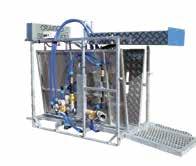






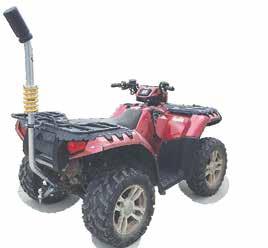


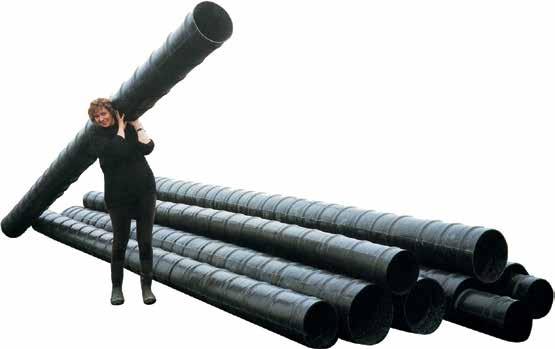







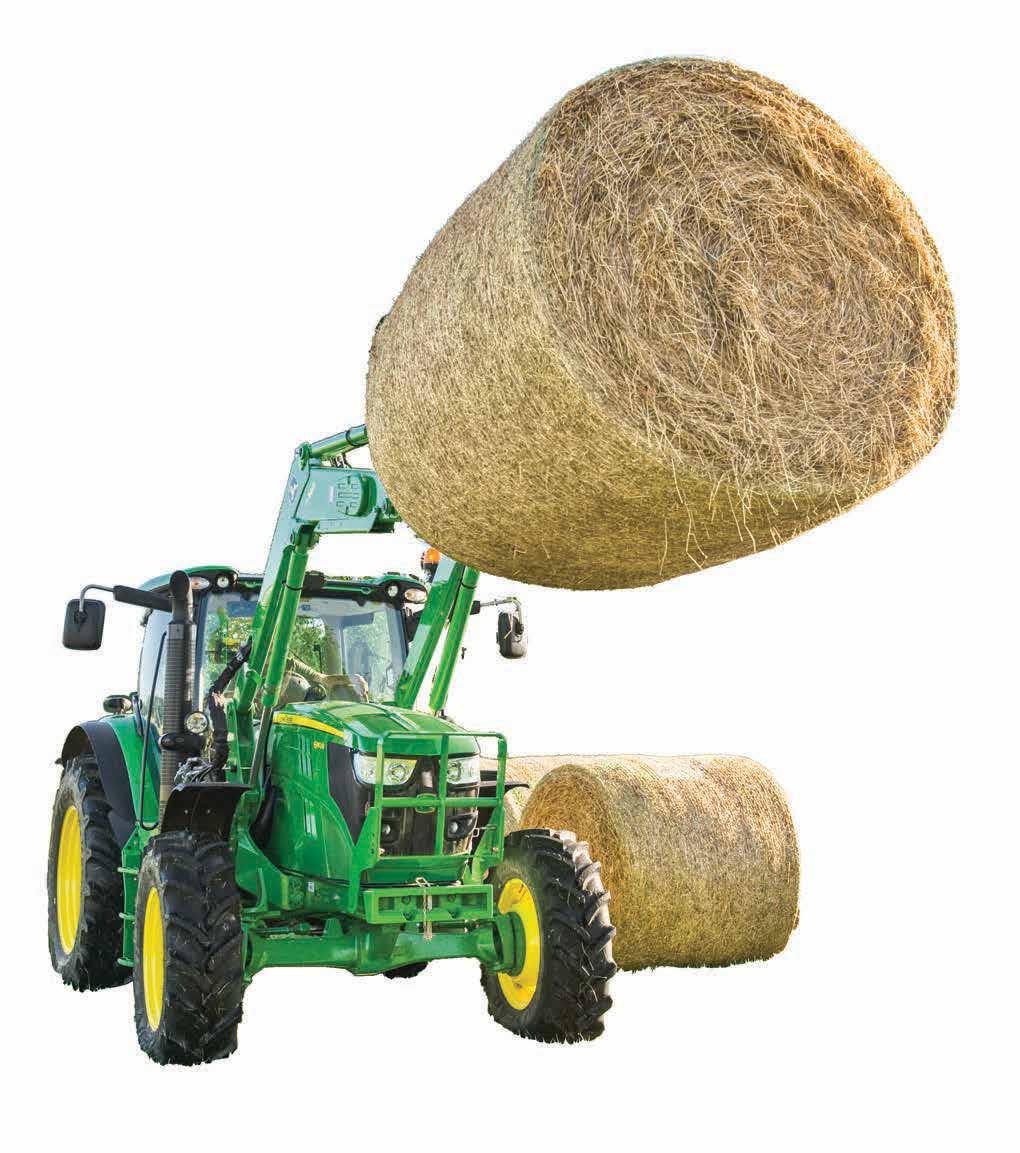

*Conditions apply. John Deere Financial Limited. Approved commercial applicants only. Based on 20% deposit, GST back in month 3, and 48 month term. Interest repayments will be covered by Brandt Tractor Ltd until 01/01/2025. O er applicable to in stock units only and unit must be sold and delivered prior to 30/04/2024. Fees and charges apply. Unless amended or withdrawn early, o er expires on 30/04/2024.
